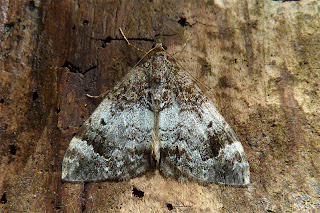Green Hairstreak
William isn't really into our avian friends but that doesn't really bother me as he is very keen on other aspects of our wonderful Natural History so it was nice to show him a couple of damsels and dragons.
If any of my id's are wrong please let me know
Common Blue Damselfly - brown form
Common Blue Damselfly
Common Blue Damselfly - male
Scarce Chaser
Oedemera nobilis - Swollen-thighed Beetle (thanks Dr Duff)
Neofaculta ericetella
The above moth is common on it's foodplant - heather, and sure enough there were a few around.However, I didn't notice any Horse Chestnut trees but I'm fairly certain this next moth is HC Leaf-miner
Horse Chestnut Leaf-miner
Whilst I was trying to photograph a Common Heath moth, unsuccessfully, I noticed this caterpillar which appears to be an Emperor Moth larva. As it's a moth I've only seen once before and one that William is very keen to see we are going to try and breed it out. So far so good and it seems to prefer Hazel and is growing at a good rate.
Emperor Moth
I think it had just moulted out of it's 2nd instar skin and left this behind:
Emperor Moth 2nd instar?
This beast of a fly posed nicely for photos, anybody able to put a name to it please?
Brown Heath Robberfly (thanks Warren and Stuart Elsom)
Lastly, another plea for id help please. One of the shrubs in the front garden has good numbers of this caterpillar but I can't work out what it is.
Berberis Saw-fly (thanks @stewchat)




















































